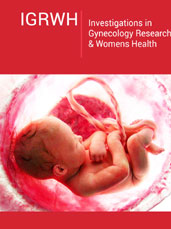- Submissions

Abstract
Investigations in Gynecology Research & Womens Health
Relationship Between Late Follicular Phase Progesterone Level and the Risk of Ectopic Pregnancy Following IVF-Fresh Embryo Transfer Cycles: A Case-Control Study
-
Open or CloseMattar S1*, Lapensée L2,3, Sylvestre C2,3, Eberle A4, Phillips S2,3, Ghulmiyyah L5 and Antaki R2,3
1Orchid Reproductive & IVF Center, UAE
1Department of Obstetrics and Gynecology, Division of Reproductive Endocrinology & Infertility, Université de Montréal, Montreal, Canada
1Clinique ovo, Montreal, Canada
1Faculty of Medicine, Université de Montréal, Montreal, Canada
1Women’s Specialty Care of Florida, Pediatrix Medical Group, Fort Lauderdale, USA
*Corresponding author:Mattar S, Orchid Reproductive & IVF Center, Dubai, UAE
Submission:May 06, 2025;Published: May 26, 2025
Abstract
Objective: To assess whether increased progesterone level during controlled ovarian stimulation increases the risk of Ectopic Pregnancy (EP) following fresh Embryo Transfer (ET).
Design: Retrospective case-control study.
Materials and Methods: All cases (n=29) of EP (study group) were compared to 79 cases of documented viable intra-uterine pregnancies (control group) between August 2009 and December 2016 at an academically-affiliated fertility center (Clinique Ovo, Montreal, Canada). The control group cases were selected based on a random number generator model on a year-to-year basis. Bivariate analysis was conducted to assess the effect of all collected variables on EP.
Result: The two groups did not differ significantly in factors traditionally associated with EP (previous EP, endometriosis, tubal disease, history of pelvic infection, and abdominal surgery). Patients with EP were more likely to have had day 3 rather than a day 5 transfer (P=0.001), had double rather than a single ET (P=0.001), and finally were more likely to have had a difficult transfer (P=0.004), independently of the use of a rigid catheter. Median progesterone level measured on the day before or on the day of ovulation trigger was not statistically different between the two groups (2.55nmol/L for the study group vs. 2.52nmol/L for the control group, P= 0.169).
Conclusion: No relationship between late follicular phase progesterone level and EP could be demonstrated in this study. This can be due to a neutralizing effect of the opposing physiologic actions of progesterone: promoting uterine quiescence that favors intrauterine implantation on one side, and decreasing tubal ciliary beat frequency that promotes tubal implantation on the other.
Keywords: Ectopic pregnancy; Assisted reproduction technology; Progesterone level; IVF; Tubal physiology
 a Creative Commons Attribution 4.0 International License. Based on a work at www.crimsonpublishers.com.
Best viewed in
a Creative Commons Attribution 4.0 International License. Based on a work at www.crimsonpublishers.com.
Best viewed in 








.jpg)






























 Editorial Board Registrations
Editorial Board Registrations Submit your Article
Submit your Article Refer a Friend
Refer a Friend Advertise With Us
Advertise With Us
.jpg)






.jpg)














.bmp)
.jpg)
.png)
.jpg)










.jpg)






.png)

.png)



.png)






